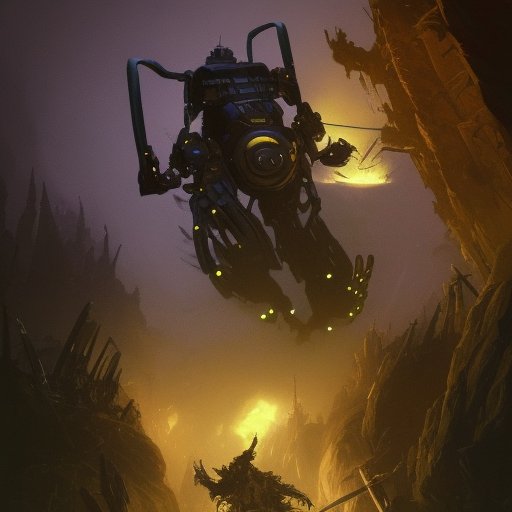
Buckle up and get ready to venture into the final frontier as we explore the evolution of war strategy systems in space. Looking back at the Cold War space showdowns, we dissect the pros and cons of the strategy systems used then and take a peek into the future to see where war strategy systems in space are headed. With technology playing a significant role in shaping the landscape of battle, we examine how AI fits into the future of these systems. Join us on this journey as we highlight the need for sustainability and safety in the development of war strategy systems in space, for in the absence of these crucial rules, the consequences could be astronomical.
I. Introduction
In the vast expanse of space, humanity has always gazed upwards, marveling at the infinite potential of the cosmos. Yet, as we begin to explore the frontiers of the galaxy, the dream of leaving behind our earthly struggles seems ever elusive. In particular, war and conflict continue to rear their ugly heads, even on this new frontier.

As we step boldly into the future, it is no longer a question of whether there will be wars fought in space, but how they will be conducted. The era of the Cold War, with its space showdowns, provides a glimpse into the tactics, pros and cons of systems employed, and the consequences of space wars.
In this article, we take a closer look at the evolution of war strategy systems in space. Exploring how, even in the realm of space, both offense and defense have been taken into consideration when strategizing. The rapid expansion of technology, including AI and advancements in rocket propulsion systems has facilitated the ability for such strategic planning but also raises questions regarding safety and sustainability.
The critical balance between innovation and safety is at the forefront when considering war strategy in space. With every action, there are consequences. The safety of our planet, infrastructure, and ourselves must remain at the core of our decision-making processes.
As we delve further into the topic of war strategy systems in space, it is important to acknowledge that there are pros and cons to every system. We take a closer examination of Cold War space showdowns and the strategies employed, and what, if any, real-life application or development have come from it.
So, buckle up and join us, fellow space enthusiasts, as we embark on a journey to understanding the evolution of war strategy systems in space, the impact of technology on it, and the future that lies ahead.
II. The Evolution of War Strategy in Space
From the moment humans gazed up at the heavens, the desire to explore and conquer space has been at the forefront of our minds. Inevitably, war strategy systems have evolved to meet the new domain. With the dawning of the space age, technology quickly ventured from mere observation satellites to sophisticated weapons systems

Cold War tensions brought with them a new era of space exploration, one where missiles were not confined to merely land and sea. The USSR and USA simultaneously developed weapons which could be tested in space, growing ever closer to the brink of Armageddon.
This expansion of space weaponry led to the development of war strategy systems in space. Offense and defense evolved into the new frontier of defense strategy, with technologies such as ASAT (Anti-Satellite) missiles, kill vehicles, and laser systems all coming into play. In turn, this forced a response from adversaries to consider how to prevent such tactics while simultaneously pushing the envelope with new tech development.
With advances such as AI, autonomous programming, machine-learning, and computing, the handling of vast datasets for computation and analysis enhanced strategic planning capabilities. The grit of war strategy lay in the efficiency of the program coding and hardware upgrades, yet experts still advocate for consideration to those at the helm in case of equipment failure.
As we approach the past decade, war strategy systems in space have shifted subtly but significantly. Satellites no longer just provide reconnaissance or communication, but the deployment of weapons on board. Some weapons even have the ability to temporarily blind or disrupt the performance capacity of the adversary’s systems.
The escalation of war strategy systems in space may seem daunting to some, but it cannot be denied that extraordinary strides in technology are being made. As a species, our ability to overcome challenges, both man-made and natural, is the quintessence of our remarkable talent.
III. Cold War Space Showdowns – An Overview
The Cold War was a time of intense global conflict, not only in the physical world but also in the realm of space. The United States and the Soviet Union were locked in a battle of ideologies, and space was a key battleground.

The objective of the Cold War space showdowns was to show that each side was technologically superior in space. The successful launch of the first satellite, Sputnik 1, by the Soviet Union was the beginning of the space race and marked one of the most significant moments of the Cold War space showdowns.
Both nations invested unprecedented amounts of resources, time, and research efforts into space exploration and militarization. The result was an impressive array of space vehicles, rockets, and weapons that stunned the world. Among the highlights of the Cold War space showdowns were the development of missiles for satellite destruction, the first spacewalk, and the landing of probes on planets outside Earth.
The Cold War space showdowns also saw a shift in military technology and strategy, moving from traditional means of warfare to more sophisticated and stealthy forms of fighting. The introduction of spy satellites, for example, which were able to detect military movements within minutes, provided a new level of intelligence to the United States and the Soviet Union.
However, the Cold War space showdowns had dire consequences as well. In 1983, a computer error caused the Soviet Union to believe that the United States had launched a missile, nearly leading to a catastrophic nuclear war. This incident highlighted the fragility of space warfare and the unpredictable consequences that could arise from it.
IV. The Pros and Cons of Strategy Systems Used in Cold War Space Showdowns
Taking a closer look at the strategy systems employed in the Cold War space showdowns, it becomes clear that while there are pros and cons to each, the consequences of ill-thought-out systems could be catastrophic.

On the offensive front, the development of space-based missile launch systems provided the opportunity to deploy weapons from space, expanding the potential range of conflict zones. However, such systems were also easily detectable, a sitting target for enemy missiles.
Meanwhile, the defensive systems that were employed, such as the use of GPS and infrared sensors, proved effective in detecting incoming missiles. However, they were also weak to jamming or hacking technologies, leading to potential weaknesses and dangerous outcomes.
Additionally, while Cold War space showdowns primarily involved the United States and the Soviet Union, any potential future conflicts will involve nations across the globe, raising questions about international laws and protocols. Should all nations have an equal say in the use of space for armament?
Moreover, with the acceleration of technology, firewalls and security measures are no longer enough to protect space-based systems from cyber attacks. The evolution of AI poses another unique threat, with the potential to automate decision-making processes, leading to devastating consequences.
Nevertheless, what cannot be denied is the ingenuity and innovation that has come from these Cold War conflicts. While the prospects of destructive space warfare is undoubtedly daunting, there have been numerous discoveries and advancements, including the sheer sophistication of space-based communication systems, that have made our lives easier and more convenient.
V. The Future of War Strategy Systems in Space
Looking towards the future, it is clear that war strategy systems in space will continue to develop, both in terms of technology and tactics. As new rocket propulsion systems and AI emerge, the possibilities for space warfare strategies become seemingly endless.

For instance, swarm tactics, where multiple smaller vehicles can be used to swarm a larger target, and orbital camouflage, have the potential to revolutionize space warfare. Additionally, the use of hypersonic missiles and particle beams, which use high-energy particles as a weapon, are other possibilities, with the latter already seen in science fiction.
However, with such rapid development also comes increased risks, such as the possibility of space debris caused by the weapons used in space conflicts. It is vital that we tackle these issues to ensure that the development of war strategy systems in space is both sustainable and safe.
Moreover, the role of AI in future war strategy systems in space cannot be understated. As autonomous systems become more sophisticated, the use of AI in space warfare may be inevitable. The ability for AI to make decisions, learn, and adapt at a faster rate than humans means that it may play a vital role in the future of space warfare. This, however, raises ethical questions regarding the use of autonomous weapons and the extent to which humans should retain control over them.
As humanity’s frontier of space exploration expands, it is essential that we prioritize the safety and sustainability of our actions. The consequences of space warfare can be catastrophic, with the potential to impact not only our planet but also the entire galaxy. With this in mind, the development of war strategy systems in space must be approached with a sense of responsibility and caution.
In the end, the future of war strategy systems in space is both exciting and daunting, with the potential for both great advances and catastrophic consequences. It is up to us to take an active role in shaping this future towards one that is both sustainable and safe for all.
VI. Technology and Its Impact on War Strategy in Space
As we delve deeper into the realm of space warfare, technology is an ever-present game-changer. From the development of more efficient engines enabling longer journeys, to the integration of AI for more strategic planning and response, technological advancements provide an edge in planning and executing war strategies in space.

Take for instance, the concept of autonomous spacecrafts. Such modular concepts, involved in the creation of the International Space Station, can detach from the station and navigate on their own. Such technology could provide significant advantages in space battles, allowing craft to work in conjunction for medium-range attacks but also separating for longer range targeting.
Additionally, the development of propulsion engines such as VASIMR, which utilize high-power radio-frequency electromagnetic fields to accelerate plasma, will provide significant advantages in space warfare, enabling near-instantaneous acceleration and deceleration, critical in engagements where battles can take place across vast distances.
However, as technology advances, it is important to keep in mind the risks, one being hacking. This scenario was visualized in 2018 when a Chinese hacked into a US defense contractor Delta Marlin’s computers and stole sensitive plans for several weapons. In the case of space warfare, hacking could lead to the destruction of expensive spacecraft, and the loss of the lives of those aboard or in the path of debris.
Moreover, upgrades in defensive infrastructure will be essential. Orbital defenses such as ground-based lasers and kinetic energy weapons such as tungsten rods launched from space, will play a vital role in safeguarding precious satellites and defending against enemy attacks.
Technology will undoubtedly play a significant role in enhancing war strategy systems in space. But the risk and balance of harmful consequences cannot be overlooked. As we strive towards the next phase of space exploration and weaponry, we must balance the need for advancement and the repercussions of our creations.
VII. The Role of AI in War Strategy Systems in Space
As we delve deeper into the future of space warfare, we cannot ignore the significant role that Artificial Intelligence (AI) will play in shaping the landscape of battle. The ability to analyze vast amounts of data in real-time is critical to decision-making during a mission.

AI can process information from various sources simultaneously, providing more significant insights and faster responses than human decision-makers can achieve. The analysis is more accurate, identifying even the subtle patterns that may indicate impending danger.
However, AI deployment in space does not come without its challenges. The rapid evolution of technology, the reliability of the hardware, and the infrastructure must be adequately maintained to ensure effective functionality. Similarly, ethical and moral considerations must be at the foreground of AI deployment in space.
The development of AI-equipped spacecraft must guarantee the safety of the crew, the utilization of the latest tools in cybersecurity, and the prevention of any potential hack of the systems.
AI’s development may lead to the emergence of superhuman intelligence as it exceeds human intelligence limits in every imaginable way; however, this warrants the need to develop AI with clear ethical boundaries such as programming safety measures that prohibit it from developing into an entity that poses a risk to humanity.
The potential for AI’s emergent capabilities to conduct autonomous space missions may provide a distinct advantage in war scenarios. However, robotic and autonomous missions will pressurize space-based antivirus cyber protection systems while increasing cybersecurity risks.
VIII. Conclusion – The Need for Sustainability and Safety in Future War Strategy Systems in Space
As we come to the end of our exploration of war strategy systems in space, one thing is clear: Safety and sustainability must be at the forefront of any advancement in war technology. Although we cannot predict the future of space wars, we must acknowledge that such events will continue to be a possibility as humanity pushes deeper into the stars. The consequences of such events can be catastrophic, as we have seen with the fallouts of war events in our planet.

As much as possible, it is our responsibility to guarantee that advances in technology are utilized for the betterment of humankind, rather than their destruction. This requires a deep and wide understanding among policymakers, scientists and everyone working towards these advancements, of the impact their work would have on war in space.
The pursuit of innovation should always be anchored on sustainability and safety, for it is only in this way that we can guarantee the future is bright and not bleak. We must come together, realising that we are all stewards of our space environment; and work tirelessly to ensure that future space wars will not bring humankind towards the precipe of extinction.
There is still much to understand, much to learn, about the evolution of space war strategy systems. However, amidst it all, one thing is certain: as we continue to push forward, safety and sustainability must always remain paramount. May we take this ethos with us as we journey ever further out into the frontiers of space, unity and progress intertwined as one.






